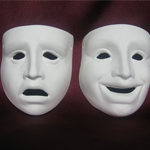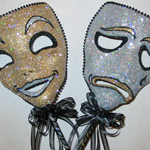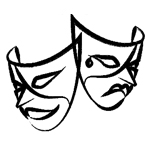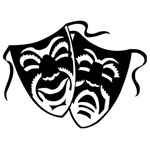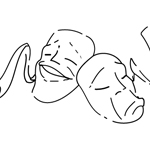
Comedy and tragedy, one facial expression bursting with mirth, the other one upside-down with sorrow, this is the pair of theatrical masks so familiar around the world. They are often referred to as Greek Theatre Masks, or Comedy Tragedy Masks, or Happy Sad Masks.
The masks originate with the comic and tragic muses, Melpomene and Thalia, in ancient Greek drama. Characters donned these masks so that audiences could easily identify their emotions. Earlier, the mask was used to act out myths and to symbolize the presence of divinities, especially in the fertility cult of Dionysos.
Although masks have vanished from modern theatre, some avant-garde troupes make use of the mask to add dramatic effect or to exaggerated psychological aspects, and to make visible dream imagery. As a stage device, it is also used to exaggerate the grotesque, satiric, myth and ritual impact sought after.
Many different cultures around the world use masks and masked figures in theatre and dance, and in religious and spiritual ceremonial rituals to portray powerful symbolic figures and meaning, from Mexico, to Japan, to Bali, to Thailand, to the Haida of the Pacific Northwest of America.


